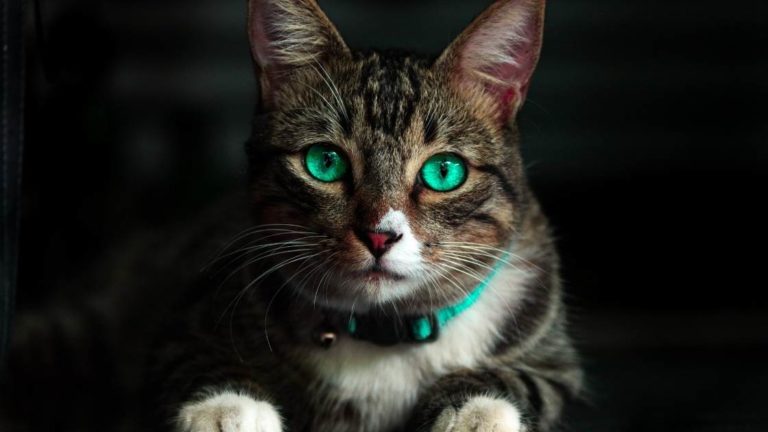How to Cat Proof Floor Vents? (5 Effective Ways)
Anyone with a cat knows that they are curious creatures who will get into anything and everything. This often includes finding their way into small spaces, like floor vents. While this may not seem like a big deal, it can actually be dangerous for your cat if they fall down the vent or get stuck inside.
To make sure your feline safe here in this post I’ll be going over some tips for keeping your cat out of the vents and I’ll also give you some ideas on how to get your cat out if they do get stuck.
Why Cats Like to Explore Floor Vents?

Cats are naturally curious creatures, and they love to explore their surroundings in search of new and interesting things. Floor vents are one such thing that many cats find intriguing, as these closed spaces offer the perfect opportunity for them to hide, pounce, and play without being disturbed.
Additionally, floor vents provide a warm and cozy space that feels safe and comfortable to many cats. Some believe that this sense of safety may come from the way floor vents echo the sounds of their environment, which can help alleviate some of the anxiety or stress that cats may feel when exploring unfamiliar territories.
Ultimately, it seems as though there are a number of different factors that contribute to why cats love to explore floor vents, making them a fascinating and rewarding part of any cat’s home environment.
5 Effective Ways to Cat Proof Your Floor Vents

Here I’ll go over 5 different ways that you can cat proof your floor vents to keep your feline safe and happy.
1. Cover The Vents with a Screen or Mesh Material
Yes, this may not be the most attractive option, but it is one of the simplest and most effective ways to keep your cat out.
You can easily find screen or mesh materials that are designed specifically for this purpose and will provide a barrier that cats cannot easily get through.
2. Add Ropes, Toys, or Scratchers Around the Vents
Another way to deter your cat from entering the vents is by adding some fun and stimulating accessories around them. Placing some ropes, toys, or scratchers near the vent openings can help keep your cat occupied and discourage exploration into the vent itself.
3. Block off Access to the Vents with Furniture or Appliances
If your cat doesn’t seem easily deterred by the screen or other materials you’ve placed around the vents, consider blocking off access to them completely.
This can be done by placing furniture or appliances in front of the vents, which can effectively keep your cat from accessing them.
4. Install a Closed Vent Cover
Another option is to install a closed vent cover on your floor vents, which serves as an extra layer of protection and can help keep cats from entering the vents altogether.
5. Try Training Your Cat to Stay Away From the Vents
Finally, if you’re having trouble with your cat exploring the floor vents even after trying out the other options listed here, you might consider training your cat to stay away from them.
What to Do if Your Cat Gets Stuck in a Floor Vent?

When your beloved cat gets stuck in a floor vent, it can be a scary and stressful situation. The first thing you should do is remain calm, as panicking is only going to make things worse for both you and your cat.
Next, try to assess the situation and see if there is any way to safely remove your cat from the vent without causing further injury or distress. This may involve reaching in to the vent with your hands or using a pair of long-handled tools such as tongs or pliers to gently pry open the vent cover.
If your cat seems distressed or panicked, you may need to seek out some additional help from a professional, such as a veterinarian or animal rescue team. These experts will have access to specialized tools that can help free your cat safely, minimizing any potential damage or pain.
In the end, it’s important to remember that getting stuck in a floor vent is not typically life threatening, and with care and patience, you and your beloved feline should be able to get out of this situation just fine.
What Can a Cat Do to Your Floor Vents?

Cats are undeniably one of the most beloved pets in the world, with their playful and affectionate personalities that so many people find endearing. But while cats are generally considered to be harmless and innocent animals, they can pose a serious risk to your floor vents if you’re not careful.
The truth is that cats have a natural instinct to scratch and dig, which they often use to mark their territory or to sharpen their claws. This means that if your floor vents are exposed and unprotected, your cat may try to use them as a scratching post or toy.
Over time, this can damage the vents and create holes or gaps that allow dust, dirt, and other debris to enter your home. It can also lead to costly repairs as well as exposure to harmful allergens like mold and mildew.
To prevent this from happening, it’s important to take steps to protect your floor vents from damage by cats. This might include covering them with durable plastic sheets or installing grates over them that will keep your cat from reaching them.
Additionally, investing in regular cleaning schedules for your vents can help minimize the risk of damage from harmful particles entering your home.
So if you love having a cat but want to prevent it from damaging your floor vents, take steps to protect those vents from scratches and scratches today. With proper care and attention, you can keep both yourself and your kitty happy for years to come.
Could a Cat Hurt Itself on a Floor Vent Cover?

Many cats are curious creatures and love to explore their surroundings. This often leads them to investigate objects that look interesting or unusual, even if there is the potential for danger.
One such object that could potentially cause a cat harm is a floor vent cover. These covers are typically made of hard materials like metal or plastic, which can easily cause cuts and other injuries if a cat steps on them or tries to scratch at them.
Furthermore, these covers can sometimes be sharp and jagged, creating further risk of injury to the cat’s paws or claws. Because of this, it is important to keep an eye out for any activity around your floor vents that could potentially put your cat in danger.
If you notice that your cat is spending too much time near the vents, you may want to take some precautions to protect it from harm.
You could try adding soft padding around the edges of the covers or moving them so they are less accessible to your cat. By taking these steps, you can help ensure that your cat stays safe and healthy while exploring its environment.
How to Train a Cat to Avoid the Floor Vents?

If you own a cat, then you are probably familiar with their natural desire to explore everything in sight. This can be particularly problematic when it comes to floor vents, as your cat may try to use them as a scratching post or toy.
Fortunately, there are several steps that you can take to train your cat to avoid the floor vents.
1. Use a Noisy Can (filled with coins)
I found that simply shaking a noisy can filled with coins near the vents will often be enough to scare away cats and teach them to stay away.
2. Provide Plenty of Playtime
Another great way to keep your cat distracted is by providing lots of playtime and enrichment activities. This could include things like puzzle toys, games with strings or mice, or even regular play sessions with you.
3. Invest in Safety Gates
If your cat still seems determined to get near the vents, then you may want to consider installing safety gates or other barriers around them. This will help keep your cat away from the tricky areas and prevent it from getting hurt or causing damage.
4. Loudly Say “No”
Finally, you may also want to consider shouting out loud or using some other form of negative reinforcement when your cat approaches the vents. Over time, this can help teach your cat that these areas are off-limits and discourage it from exploring them in the future.
By implementing these training strategies, you can help keep your cat safe and out of trouble around your floor vents. With a little patience and consistency, you can help condition your cat to avoid these areas altogether and protect it from harm in the future.
Some Safety Tips to Keep Your Cat Safe Around Floor Vents

Whether you own a cat or simply have floor vents in your home, it’s important to take the necessary precautions to keep your feline friend safe and healthy.
1. Regular Clean & Check
One of the most important things you can do is to regularly clean and check your floor vents for any signs of damage. This will help ensure that they are not sharp or jagged, which could cut or injure your cat if it steps on them.
2. Use Soft Padding
You may also want to consider adding soft padding or other protective materials around the edges of the vents. This will make them less accessible to your curious cat and provide an added layer of protection against potential injuries.
3. Move Vents to Less Accessible Areas
If possible, you may also want to consider moving your floor vents to less accessible areas of the room. This will help keep your cat from being tempted to explore and can reduce the risk of accidental injury.
By taking these simple steps, you can help ensure that your cat stays safe and healthy when exploring its environment. With a little forethought and planning, you can help keep your feline friend out of harm’s way and give it the care it deserves.
My Final Thoughts
When trying to cat proof floor vents, one of the most important things to consider is how much airflow you need in your home. This will depend on a number of factors, including the layout and size of your space as well as your family’s needs and preferences.
That said, there are a few basic steps that you can take to ensure that your floor vents are properly cat-proofed. The first thing to do is to check the sensitivity of your vents and make sure that they are not always open or closed. Instead, try setting them so that they open and close automatically according to changes in temperature or humidity.
You should also look for any gaps or openings where your cats may be able to access the duct-work underneath your floors. Sealing these gaps with caulk or other appropriate materials can help keep kitties out of harm’s way. Additionally, it might be helpful to invest in vent covers or grates that can further deter cats from creeping around under the floorboards.
Ultimately, keeping your home safe and comfortable for both yourself and your feline friends requires some strategic planning and some thoughtful adjustments. With these tips in mind, you should be able to successfully cat-proof your floor vents and enjoy peace of mind for many years to come.






